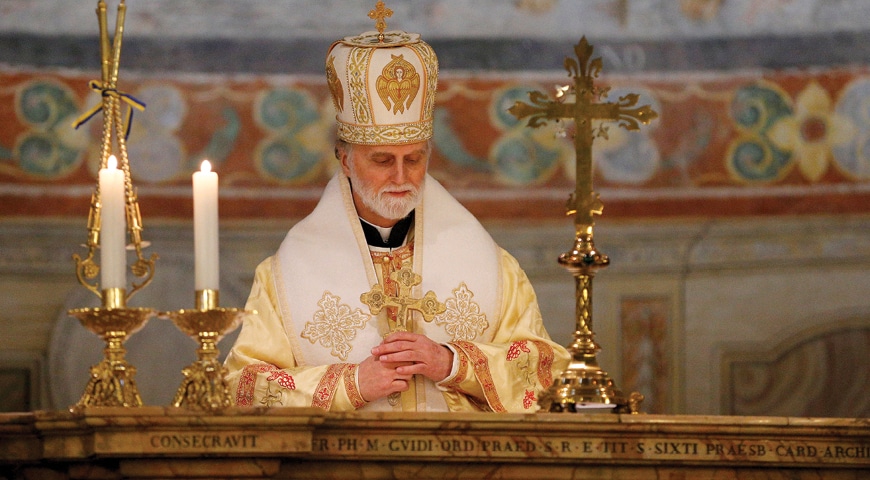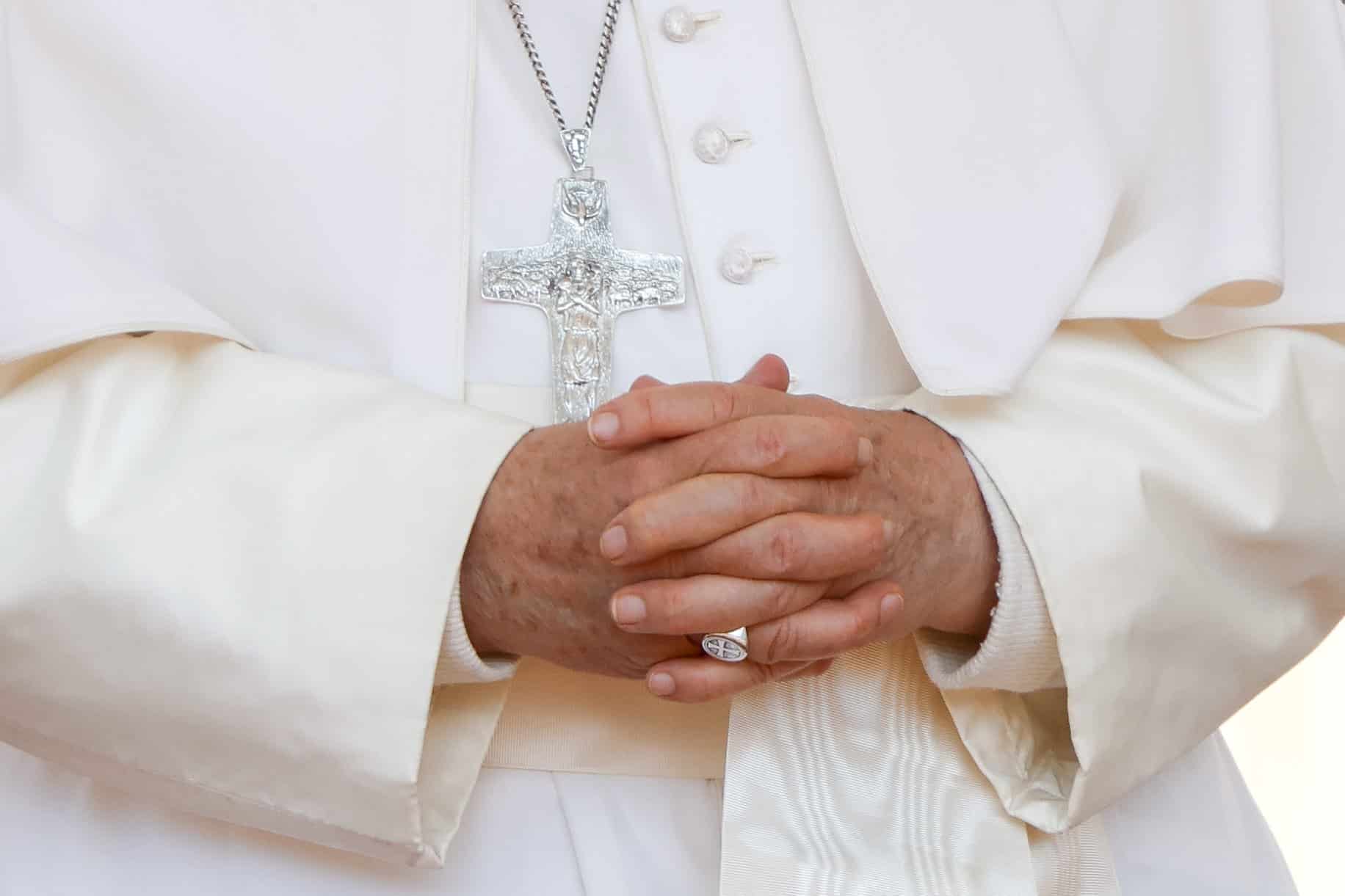What is the difference between the Ukrainian Catholic Church and the Ukrainian Orthodox Church? Are both of those Churches present in the United States?
The Roman Catholic Church uses the terms “Ukrainian Greek Catholic Church” and “Ukrainian Orthodox Church.” Both Churches are present in the United States. The difference is whether their members are in full communion with the bishop of Rome.
Although the first group is, the second group is not. The first group regards the major archbishop of Kyiv as their spiritual leader; he is in communion with the pope. The Ukrainian Orthodox Catholics see their leader as one of three men: the patriarch of Moscow, a Ukrainian leader appointed by him, or a leader of the Ukrainian Autocephalous Orthodox Church (independent of Moscow).
Aside from theology, the main differences are liturgical. Sts. Cyril and Methodius (ninth century AD) received permission from the patriarch of Constantinople to use the vernacular rather than Greek for celebrations of the Eucharist and other sacraments. They evangelized Slavic peoples mostly in present-day Romania, Bulgaria, Slovakia, Hungary, Poland, and the Czech Republic. Their liturgy is celebrated in Old Slavonic, written with the Cyrillic alphabet, also used by the Russian Orthodox Church. Both the Catholic and Orthodox Churches in Ukraine place the altar near an iconostasis, a wall or partition covered with icons and having doors that are opened during part of the Divine Liturgy.
There are also Latin-rite Catholics in Ukraine, though their numbers are very small; most of them already belonged to the Latin (Western) Church before they or their ancestors moved to Ukraine.
Ukrainian Greek Catholics have an archeparchy (the equivalent of a Roman Catholic archdiocese) in Philadelphia and dioceses in Chicago and Parma, Ohio.
Both Churches have suffered significantly during the current war in Ukraine.
In the Apostles’ Creed, we pray that Jesus Christ “rose again from the dead” and then ascended into heaven. The word again suggests “a second time.” When was the first time?
Because the Church has believed that no one is saved apart from the death and resurrection of Jesus, believers have long thought that between Jesus’ burial and his appearance in his risen body to Mary Magdalene and the apostles, he “descended into hell,” as the same creed states. In fact, “the underworld” is a better translation because it avoids confusion with hell as a state of permanent separation from God.
In light of this belief, Jesus’ first resurrection would be without a glorified body, which nevertheless is pictured in some artwork. Before his resurrection from the tomb, Jesus led into heaven all the just women and men who had died before he did. When he rose with his glorified body, he was thus rising again to enable those who knew him on earth to affirm that death had not conquered him as it temporarily conquers all of us.
I realize it may seem that I am splitting hairs, but I think that is what the use of the word again in the Apostles’ Creed means.
Did some people who died before Jesus make it to heaven? If, in fact, Jesus is the only way to salvation, what about all the people who lived before his time?
We need to be very careful about any language that would limit God’s ability to save. In saying that Jesus is the only way to salvation, Catholics are not saying that only baptized Catholics—or baptized Christians—can be saved. God is not limited by our language, no matter how much we try to speak carefully about what God has revealed.
Father Leonard Feeney, SJ, was formally excommunicated in 1953 for saying that only baptized Catholics can be saved. He and most of his community were reconciled to the Catholic Church in 1974, four years before his death.
Article 16 of Vatican II’s “Dogmatic Constitution on the Church” addresses this issue very clearly, noting that Jews, Muslims, and those who through no fault of their own do not know the Gospel of Christ or his Church can be saved.
That passage continues: “Nor will divine providence deny the assistance necessary for salvation to those who, without any fault of theirs, have not yet arrived at an explicit knowledge of God, and who, not without grace, strive to lead a good life.
“Whatever of good or truth is found among them is considered by the Church to be a preparation for the Gospel and given by him who enlightens all men and women that they may at length have life.”
It is crucial that we Catholics first practice and then share our faith. Our ways of thinking, however, cannot limit God’s ways of acting, which is exactly what Feeney’s understanding of the saying “No salvation outside the Church” did.
There are various companies and chains of stores that offer abortion coverage to their employees or pay for their travel to a state where abortion is legal. Is it a mortal sin if I continue to do business with them?
Situations are too complex to permit a one-size-fits-all answer here. Some lifesaving drugs, for example, are available only from companies such as those you describe.
Prudential judgments must be made. Although it would be wrong to choose a company simply because its health-care policy offers its employees abortion coverage, it is simply impossible in our interconnected world to avoid all situations that might be described as remote “cooperation in evil.” Do the best you can.









1 thought on “Catholic and Orthodox Groups in Ukraine”
Hy my name is Frankie and live in San Juan, Puerto Rico and aside from the local clergy most lay people down here in the warm winters of the Caribbean Sea dont even know that Eastern Catholic Churches exist and they only know that the Orthodox Church exists although they know a lot about Protestants (churches founded by men starting by Martin luther in the Latin West).
Do the present day Catholics and Orthodox Churches were one Church and faith before !054)
Do Eastern Popes (pope St. Clement of Rome) were Catholic or Orthodox christians ?